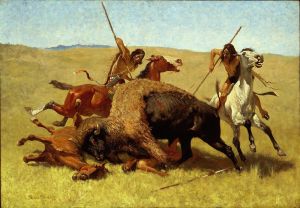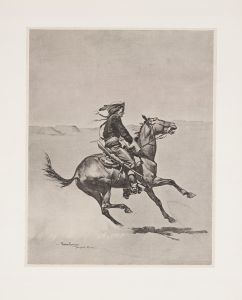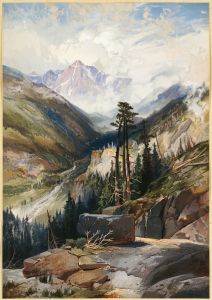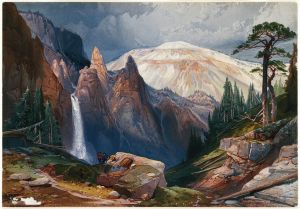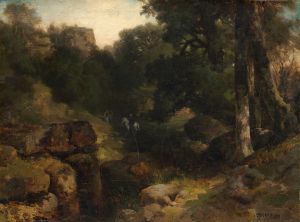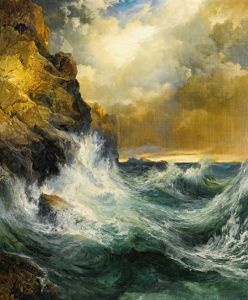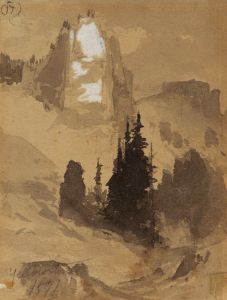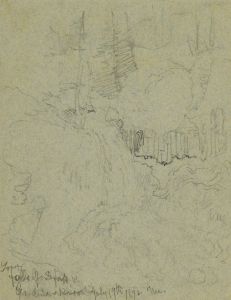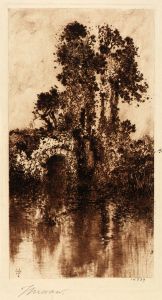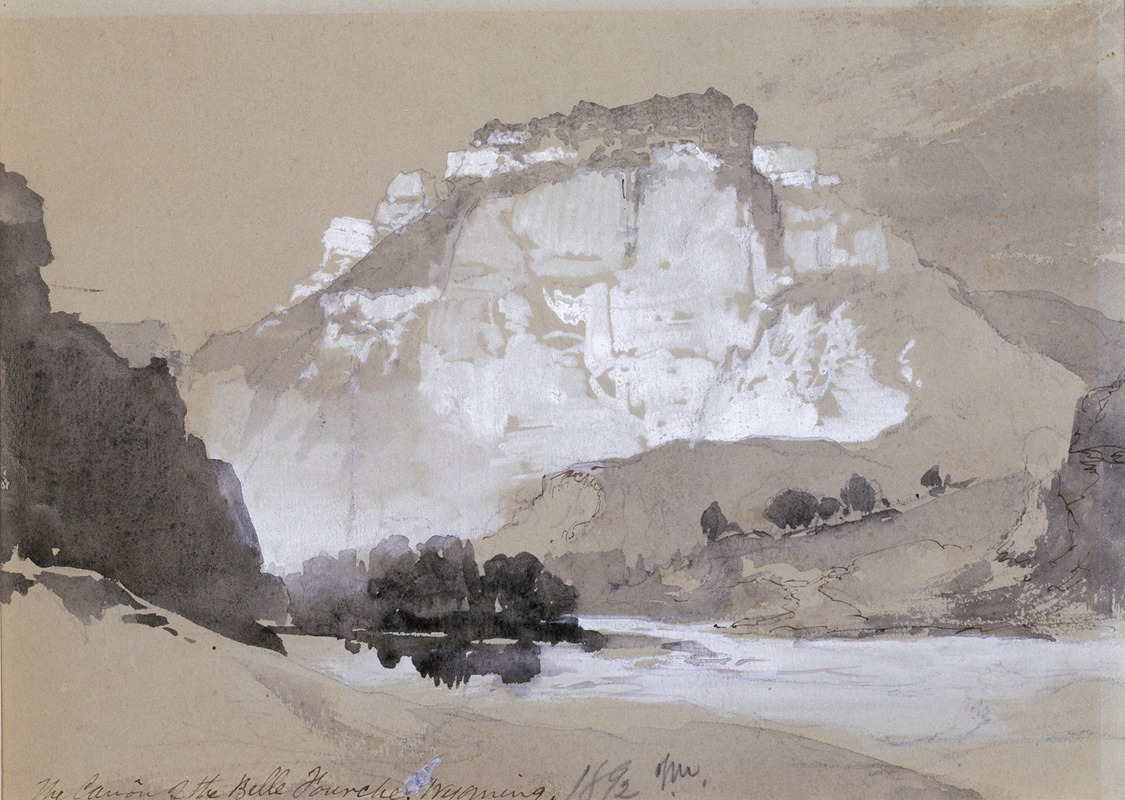
The Cañon Of The Belle Fourche, Wyoming
A hand-painted replica of Thomas Moran’s masterpiece The Cañon Of The Belle Fourche, Wyoming, meticulously crafted by professional artists to capture the true essence of the original. Each piece is created with museum-quality canvas and rare mineral pigments, carefully painted by experienced artists with delicate brushstrokes and rich, layered colors to perfectly recreate the texture of the original artwork. Unlike machine-printed reproductions, this hand-painted version brings the painting to life, infused with the artist’s emotions and skill in every stroke. Whether for personal collection or home decoration, it instantly elevates the artistic atmosphere of any space.
Thomas Moran's painting "The Cañon Of The Belle Fourche, Wyoming" is a notable work by the renowned American artist, who is best known for his dramatic landscapes of the American West. Moran, born in 1837 in Bolton, England, immigrated to the United States with his family as a child. He became one of the leading figures of the Hudson River School, a group of painters known for their romantic portrayal of the American landscape.
Moran's work played a significant role in the exploration and appreciation of the American West during the 19th century. His paintings were instrumental in the establishment of national parks, as they captured the imagination of the public and policymakers alike. His depictions of the Yellowstone region, in particular, were influential in the creation of Yellowstone National Park in 1872, the first national park in the world.
"The Cañon Of The Belle Fourche, Wyoming" is one of Moran's many works that highlight the rugged beauty of the western United States. The Belle Fourche River, which flows through Wyoming, South Dakota, and Montana, is a tributary of the Cheyenne River. The region around the Belle Fourche is characterized by its striking canyons and diverse landscapes, which provided Moran with ample inspiration for his art.
Moran's technique often involved the use of vibrant colors and dramatic contrasts to emphasize the grandeur and majesty of the natural world. His ability to capture light and shadow added depth and realism to his paintings, making them not only visually stunning but also emotionally evocative. This approach is evident in "The Cañon Of The Belle Fourche, Wyoming," where Moran's use of color and composition brings the scene to life, inviting viewers to experience the awe-inspiring beauty of the canyon.
Throughout his career, Moran was known for his meticulous attention to detail and his dedication to capturing the essence of the landscapes he painted. He often accompanied geological surveys and expeditions, which allowed him to observe and sketch the landscapes firsthand. These experiences provided him with a deep understanding of the terrain and its unique features, which he translated into his artwork.
Moran's contributions to American art and culture extend beyond his paintings. His work helped to shape the perception of the American West as a place of natural wonder and beauty, worthy of preservation and exploration. His legacy is reflected in the continued appreciation of his art and the landscapes he depicted, which remain iconic symbols of the American frontier.
"The Cañon Of The Belle Fourche, Wyoming" exemplifies Moran's ability to convey the vastness and splendor of the western landscape. It stands as a testament to his skill as an artist and his passion for the natural world. While specific details about the creation and history of this particular painting may be limited, it remains an important part of Moran's body of work and a valuable piece of American art history.





